Has public bicycles been defeated by shared bicycles? Bicycle | Wuxi, Jiangsu | Bicycle
Since the beginning of this year, public bicycles have gradually ceased service in many places. In April this year, public bicycles in Wuxi, Jiangsu Province were officially discontinued. Wuxi has become the third city in Jiangsu Province to suspend public bicycles, following Yangzhou and Huai'an. In May, the public bicycle project in Baoshan District, Shanghai expired and terminated. Previously, public bicycle projects in Minhang, Fengxian, Qingpu and other districts in Shanghai have announced their withdrawal after the contract expired.
On the other hand, shared mobility continues to advance rapidly. The Blue Book of the Sharing Economy - Report on the Development of Shared Mobility in China shows that shared bicycles and electric bicycles are entering a steady development stage and gradually becoming the main force in the market. Among them, the comprehensive business of Hello Bike, Hello Power Assisted Bicycle, and related derivative scenarios has settled in over 460 cities, covering over 500 million users. At present, Hello has achieved a positive gross profit conversion.
Public bicycles refer to bicycles that are put into operation by relevant municipal management departments or state-owned enterprises and have a public service nature, usually with fixed pick-up and return points; Shared bicycles are mostly bicycles launched by private enterprises and can be used by scanning the QR code with a mobile phone.
The information and data at the beginning of this article seem to be a story of a public bicycle and a shared bicycle, with one side backing out and the other filling in.
However, the reporter found that in some cities in the Yangtze River Delta, public bicycles have quietly transformed, solving multiple inconvenient pain points and becoming popular again.
For example, in Shaoxing, Jiaxing, Taizhou and other places in Zhejiang, lightweight and compact bicycles without piles are becoming increasingly popular. You don't need to park on piles, you can scan the QR code to ride, eliminating the trouble of applying for and returning cards before, and supporting cross administrative region bike returns. In Lin'an, Hangzhou, there is also a fusion travel mode of "public bicycles+public electric bicycles". Even on scorching summer afternoons, there are still many people riding public bicycles on the streets of Shaoxing Ancient City. On a breezy night on Ziyang Street in Taizhou, a batch of public bicycles were rented out as soon as they arrived at the station, and then scattered and disappeared into the darkness.
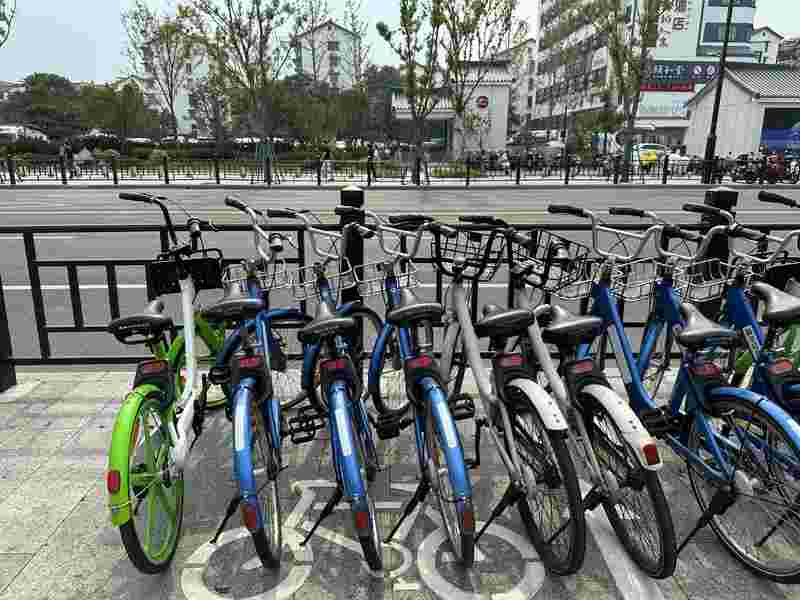
The rental experience and bike sharing experience of public bicycles in Shaoxing Yuecheng District are no different after the pile free transformation. Photo by Zhu Lingjun
Over the years, public bicycles have experienced high light moments and also encountered difficulties and obstacles. They used to view shared bicycles as competitors of "you die, I die", but they also learned from shared bicycles and tried to change. During the interview, many practitioners lamented that public bicycles are still experiencing a cold winter. But after the ups and downs, they still hope that the industry will usher in a new spring.
Outdated
The concept of public bicycles originated in Europe, with a focus on promoting bike sharing. In 1965, in Amsterdam, the Netherlands, uniformly painted and unlocked bicycles were placed in public areas, hoping to be provided for long-term free use by people. This was the earliest attempt at public bicycles. In 1995, the first batch of "systematized" public bicycles appeared in Copenhagen, Denmark, with specific storage locations and coins as evidence. By the turn of the century, the promotion of public bicycles had become more mature in countries such as France.
The earliest public bicycles in China appeared in Hangzhou. As early as 2008, Hangzhou launched the first batch of "Little Red Cars". Citizens can rent a car for free at the rental and return point with their citizen card, and then return the car to another nearby rental and return point. The first batch of 61 service points formed the initial route map of Little Red Car.
At that time, in Hangzhou, the subway had not yet been built and the elevated roads had not yet formed a network. For local residents, walking alone was not practical, public transportation was very crowded, taxis were reluctant to take, driving was inconvenient to park, and parking fees were expensive. If you want to go to places that are not far or near, choosing a mode of transportation becomes quite complicated. The emergence of public bicycles has changed this situation, and cycling has become a trend.
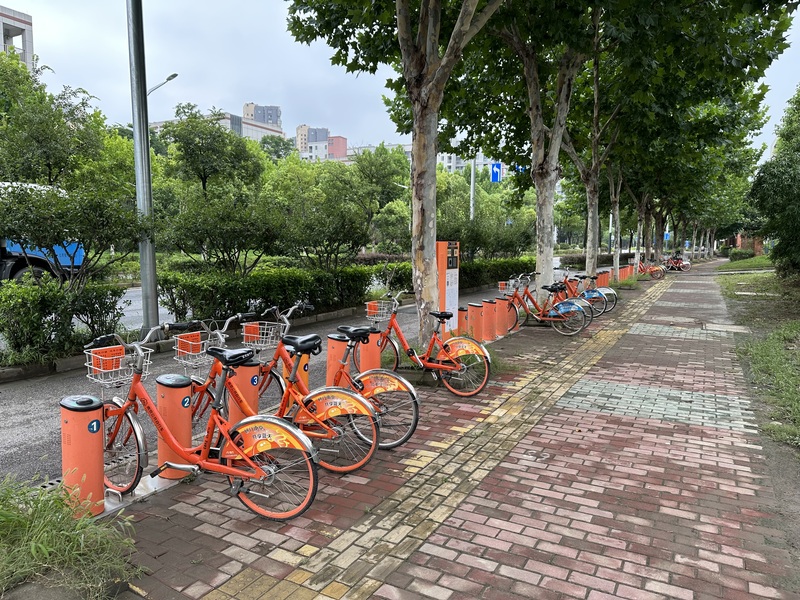
Since 2008, the rental volume of public bicycles in Hangzhou has been increasing year by year, with over 100 million rentals for consecutive years. In 2009, a newlywed couple in Hangzhou held a public bicycle wedding, with a welcoming team consisting of 30 small red cars, which quickly gained attention. Red once became the representative color of public bicycles, and the first batch of public bicycles in cities such as Wuxi and Shaoxing were painted in red. By 2014, over 237 cities in China had built public bicycle systems and operated over 750000 vehicles.
But the good times didn't last long. In just a few years, a frenzy of shared bicycles swept through, bringing a huge impact to public bicycles. Taking Hangzhou as an example, according to data from Hangzhou Public Bicycle Transportation Service Development Co., Ltd., Hangzhou's public bicycles underwent a major turning point in 2017. In 2016, the annual rental of public bicycles in Hangzhou was 115.41 million times. In 2017, it dropped to 101.25 million times, and in 2018, it continued to shrink to 87.08 million times.
"Before 2016, our development was relatively fast, which could be considered a new thing, but with the advent of shared bicycles, our public bicycles suddenly became outdated and faced obsolescence." Tian Feng, the person in charge of public bicycles in Nanjing, remembers the psychological gap of those years. The pilot development of public bicycles in Nanjing began in 2012 and was launched throughout the city in 2014. However, by the second half of 2017, the daily user volume of public bicycles had sharply declined, and the number of refunds had also increased rapidly. At that time, there was a discussion in Nanjing about whether public bicycles should continue to develop.
In Nanjing, public bicycles were once in a difficult situation. Photo by Jiang Yishan
Similar entanglements have also appeared in cities such as Shaoxing and Jiaxing. Most traditional urban public bicycles have fixed stakes, as well as features such as card rental and fixed point rental. Although it is beneficial for management and maintenance, there are many inconveniences in daily use. Compared to the method of scanning the QR code and pushing the bike to walk, public bicycles appear bulky and cumbersome. "It's a complete blow from reducing maintenance costs," recalled Wang Weidong, General Manager of the Bicycle Company of Jiaxing Jiatong Group Bus Company, with a sigh and a furrowed brow.
It is worth mentioning that the initial inspiration for the birth of shared bicycles was public bicycles. Mobike founder Hu Weiwei has mentioned more than once that in 2014, she was preparing to rent a public bicycle at Hupaolu in Hangzhou, but the small gate where she applied for the card closed. She has also experienced this frustration in Gothenburg, Sweden. In addition, the shared bicycle brand "Qibei" that first appeared on the streets of Hangzhou was once one of the partners of public bicycles in Hangzhou.
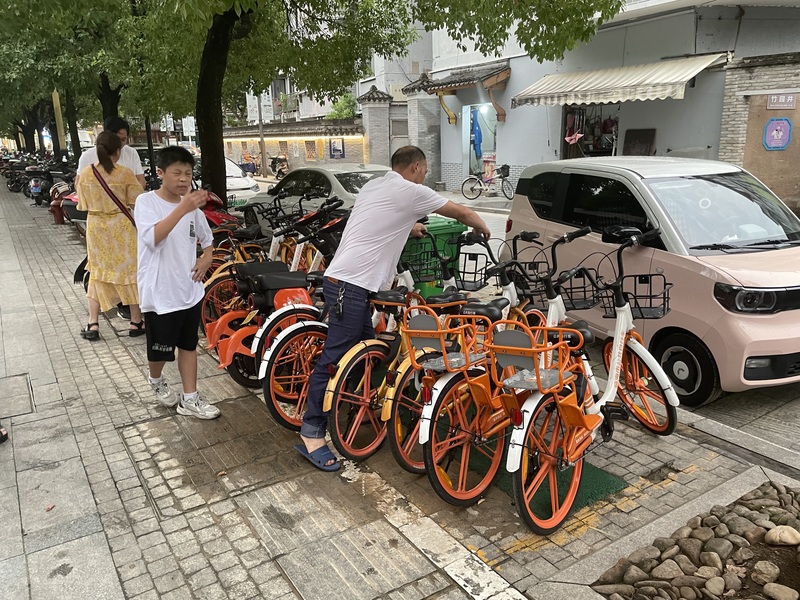
counterattack
For public bicycles, 2017 can be considered the darkest time. Since that year, some cities have announced that they will no longer add or even suspend public bicycle programs. The focus of cities that continue to operate has shifted from promotion to optimization. At that time, the main pain points of public bicycles were "inconvenience", such as their fixed pile positions, lack of support for cross administrative area return, and difficulty in obtaining and returning cards.
"The overwhelming number of shared bicycles has blinded us all at once," Tian Feng told reporters. In 2017 alone, eight shared bicycle brand enterprises entered Nanjing, and shared bicycles of various colors almost filled the entrances of small and large communities, bus stops, and subway stations in Nanjing.
However, he soon discovered that many bike sharing companies at that time were investing regardless of cost, but their management could not keep up, and there were more and more faulty cars.
Compared to shared bicycles, urban public bicycles have their own advantages, with the biggest being operational and free. For example, among the vehicles currently circulating in Nanjing, the earliest batch of bicycles were released around 2016. Apart from looking a bit old, the overall condition of the vehicles is still good. A high school student in Nanjing told reporters that he uses the subway and public bicycles to go to and from school every day, because he cannot bring his phone to school. The public bicycle that can be unlocked by swiping his card is the optimal solution. After speaking, he also pointed to the nearby rental card processing point for the reporter. A citizen of Nanjing also calculated an economic account for the reporter: "Shared bicycles often increase in price, while public bicycles are free to ride within 2 hours, which is basically equivalent to no money."
The pileless public bicycles and parent-child bicycles in Taizhou Linhai are very popular among local residents. Photo by Jiang Yishan
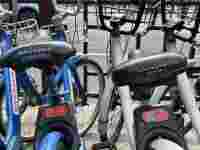
Seizing the advantage, public bicycles attempt to regain their footing and seize the opportunity to counterattack. More and more public bicycles are choosing to take the path of technological transformation. For example, in Yuecheng District of Shaoxing City, the earliest public bicycles generally required card swiping for rental. In response to the threat of shared bicycles, public bicycles added scanning functions and completed the renovation of nearly 600 stations in less than a year. Subsequently, the public bicycles in Yuecheng District have undergone multiple upgrades, in addition to scanning QR codes to rent cars, they have also added functions such as overnight return and peak shifting. After the opening and operation of the Shaoxing Metro, the traffic between Yuecheng District and Keqiao District has become more frequent, and the public bicycle systems in the two areas have also been connected, supporting cross district borrowing and returning of vehicles.
For public bicycles, the most important upgrade is undoubtedly the pileless transformation. In Nanjing, the proposal for pile free renovation was proposed many years ago, but due to limited funding, it has been difficult to advance. In 2019, Yuecheng District of Shaoxing City launched the first batch of pileless public bicycles, becoming one of the earliest areas to launch pileless public bicycles. Zhang Xiaofeng, Deputy Manager of Yuecheng District Public Bicycle Rental Co., Ltd., explained to reporters, "Except for borrowing and returning vehicles within the designated area, it is no different from sharing bicycles." According to the plan, by the end of this year, Yuecheng District will demolish all stake points and complete vehicle replacement. In Jiaxing, all public bicycles in the area have been completely transformed without piles. In May of this year, Jiaxing also launched a batch of 3000 new public bicycles in the urban area.
During the interview, the reporter experienced public bicycles in Shaoxing and Jiaxing. Due to the recent deployment of the vehicles, their condition is very good, and they are lightweight and comfortable to ride. It is also very convenient to borrow and return them. In Yuecheng District, Shaoxing City, vehicles in the unlocked state will also emit a warning sound within the designated area to remind people to lock in a timely manner. However, in terms of management, due to the relatively open return areas, it is inevitable that social vehicles and shared bicycles may occupy space for parking, which may lead to poor return of public bicycles. In addition, the coexistence of different colors and models of bicycles in the current transitional stage has also left journalists searching for public bicycles in both places for the first time somewhat dazzled.
The cross regional barriers for public bicycles have been opened up between Shaoxing Yuecheng District and Keqiao District. Photo by Zhu Lingjun
Under the trend of moving in and out, the number of shared bicycles in some cities has decreased significantly. On the contrary, the data on public bicycles is gradually recovering. Starting from the second half of 2018, the number of public bicycles in Nanjing gradually returned to a situation where the number of card applications exceeded the number of refunds. The number of rides per day increased from less than 100000 to 150000 during the peak period, and in recent years, it has remained stable at around 100000 per day. On the day of the reporter's interview, Jiaxing's public bicycles experienced a peak in passenger flow, with a daily ridership of over 7000 people, setting a new high in recent years. Wang Weidong excitedly told his opponent
Even though the relevant data has rebounded, on a larger scale, the days of public bicycles are still difficult.
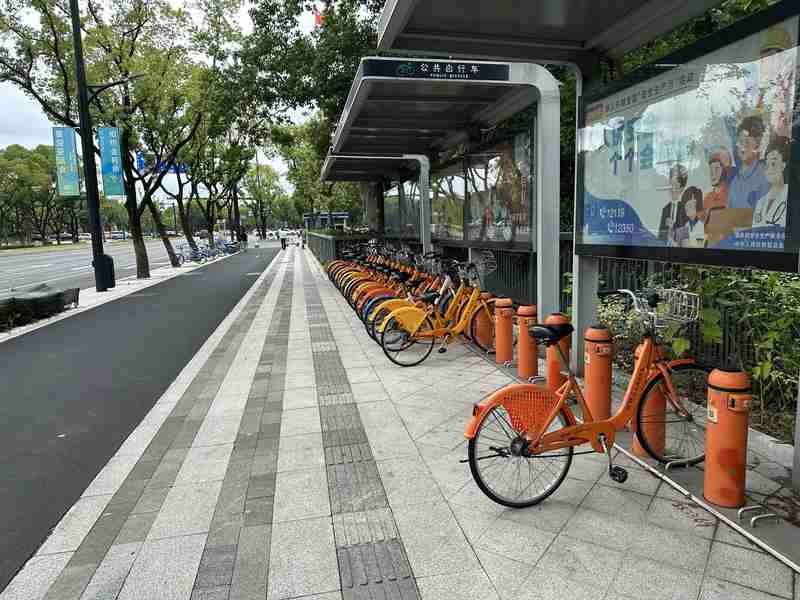
In 2019, when the reporter went to Nanjing for an interview, Tian Feng optimistically stated that public bicycles have ushered in a new spring. Four years have passed, and when the reporter saw him again, he grabbed his sparse messy hair and spoke more cautiously, "Our industry is still going through a cold winter." An interesting evidence is that their company was previously located near Nanjing Railway Station in the city, but has now relocated to a more distant Yuhuatai district, and the team has also been streamlined. Qin Yang, Chairman of Linhai Public Bicycle Development Co., Ltd., also complained to reporters, "The biggest challenge is funding. Financial appropriations have been decreasing year by year, and construction funds have stopped being disbursed. The salary system is not unified, recruitment is difficult, and team stability is poor."
After years of development, the industry has reached a consensus that "public bicycles cannot be profitable." Generally speaking, public bicycles are constructed and subsidized by local finance. In recent years, with the gradual trend of orderly and healthy development of shared bicycles, their management and operation have become more refined. At the same time, the call for the market to solve this public transportation problem is gradually growing, and more and more management departments are inclined to shift from providers of "last mile" public services to regulators.
"It's like two forked roads," Wang Weidong told reporters. On the one hand, as the government gradually withdraws and the public bicycle project is cancelled, it encourages and guides shared bicycle enterprises to increase their investment in areas where the original investment was relatively low, while carrying out comprehensive rectification of shared bicycles. On the other hand, the government continues to provide a bottom line and further strengthens the public welfare attributes of public bicycles, focusing on facilitating citizens and improving user experience.
Wang Weidong has always had great confidence in public bicycles, which comes from its public service positioning and public welfare nature. He explained that after the pile free transformation, the construction and operation costs of public bicycles have significantly decreased, but the number of service personnel has increased, and the social benefits of leveraging them are also obvious. In his vision, public bicycles should become a part of future public transportation infrastructure, such as supporting infrastructure construction such as buses and subways. Wherever the subway is repaired, public bicycles will be placed.
In the early years, public bicycles regarded shared bicycles as competitors. In April 2019, Nanjing Public Bicycle Co., Ltd. started a comprehensive cooperation with Qingju Bicycle under Didi, which is also the first case of cooperation between public bicycle and Internet bicycle enterprises in China. "Many colleagues have called me, thinking that we have defected and are digging into the wall of public bicycles. In their eyes, public bicycles and shared bicycles are opposed and cannot coexist, in a 'life or death' state, which I do not agree with." Tian Feng said.
Nowadays, cooperation between the two sides has long been suspended, but more public bicycle practitioners are becoming more aware that public bicycles and shared bicycles are not completely competitive, and there is room for integration and integrated development, with the aim of providing citizens with more travel options. Zhang Xiaofeng proposed that the target audience for public bicycles and shared bicycles do not overlap, but correspond to citizens of different age groups and different application scenarios. For example, one of the typical application scenarios of public bicycles in Yuecheng District is that the elderly population who ride bicycles to buy groceries are not accustomed to using smartphones, and their movement trajectory and activity range are relatively fixed. What is more important is the free nature of public bicycles.

In the short term, public bicycles should not be completely replaced by shared bicycles. Photo by Zhu Lingjun
In Zhang Xiaofeng's view, public bicycles and shared bicycles should complement each other more than compete in short distance travel, subway and bus shuttle transportation throughout the city. However, there are currently no projects that can be further collaborated on. Qin Yang believes that shared bicycles are more suitable for commuting scenarios, while public bicycles have some experience in group use and parent-child use. For example, in recent years, many social groups have collectively rented public bicycles for team building activities. Next, Qin Yang plans to expand the layout to suitable towns while increasing vehicle deployment, and explore cooperation models such as tourism and cycling.
Zhang Rong, the head of the public relations department of Hello brand in Shanghai, believes that the relationship between public bicycles and shared bicycles is not a simple competition, but a product of two different stages. The operation and maintenance costs of public rental bicycles of a certain scale, combined with depreciation, are a huge cost expenditure that cannot be sustained solely by the government's "blood transfusion" operation model. "In the long run, the emergence of new things is a kind of alternation, rather than a confrontation between the old and the new." Zhang Rong said that what shared bicycles need to do is how to do a good job of taking over and filling in after the public bicycles are retired.
However, it may be too early for shared bicycles to completely replace public bicycles. Experts point out that under the new situation, two wheeled electric vehicles are becoming a new variable affecting public transportation data. In July this year, a seminar on the development of the "Carbon" two round micro public transportation and urban two round public transportation industry was held in Hangzhou. Among them, the integrated travel service model of "public bicycles+public electric bicycles" received special attention. Industry insiders believe that currently, the scope of urban short distance travel has expanded from the "last mile" to the outside. Under a larger range of two wheel travel services, the emergence of public electric bicycles may provide new ideas for promoting the sustainable development of public bicycles. At the same time, low-cost public electric bicycles complement public welfare bicycles, thereby achieving sustainable operation while benefiting the people.




